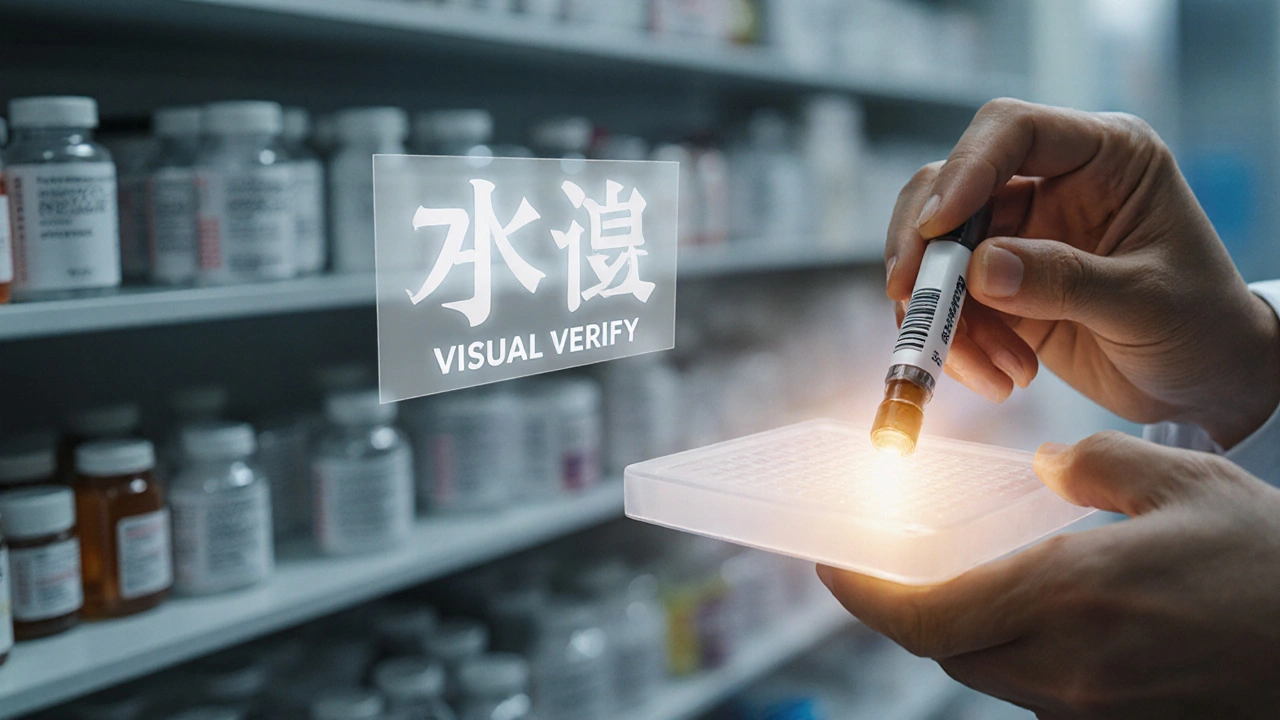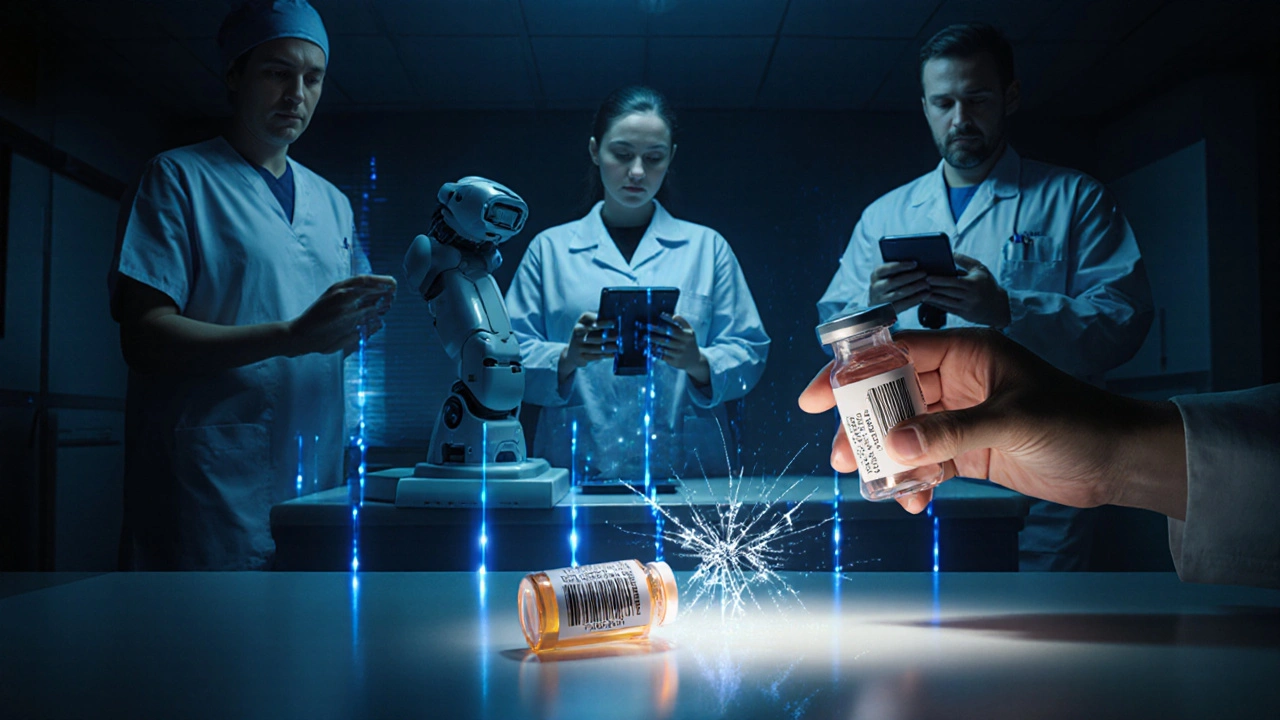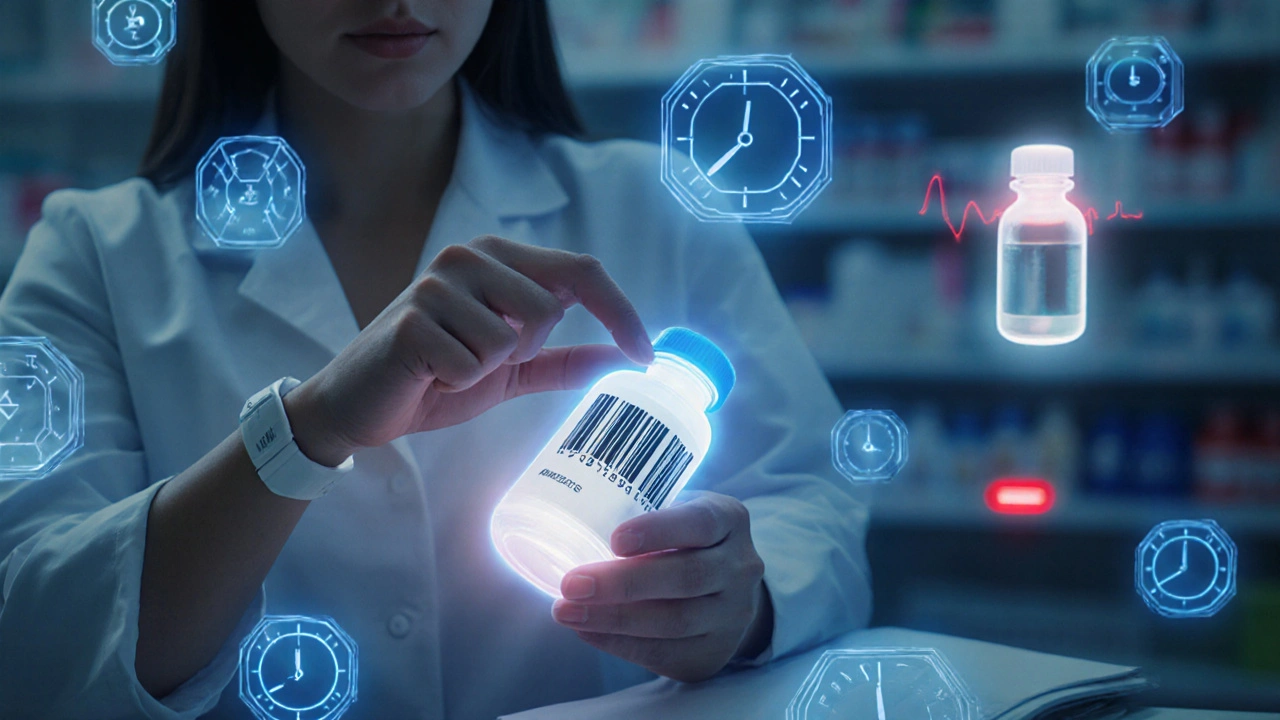Every year in the U.S., about 1.3 million medication errors happen because someone picked up the wrong pill, gave the wrong dose, or handed a drug to the wrong patient. Many of these mistakes happen at the pharmacy counter. But there’s a simple tool that’s cut those errors in half: barcode scanning.
How Barcode Scanning Stops Errors Before They Happen
Picture this: a pharmacist pulls a bottle of levothyroxine off the shelf. The label says 100 mcg. The doctor ordered 25 mcg. Without a scanner, that mistake might slip through-especially during a busy shift. But with barcode scanning, the system checks the pill against the patient’s electronic record before it leaves the counter. If it doesn’t match? The alarm sounds. The medication won’t be dispensed until the issue is fixed. This isn’t magic. It’s called Barcode Medication Administration (BCMA), and it works by scanning two things: the patient’s wristband and the medication’s barcode. Each barcode contains the National Drug Code (NDC), which links directly to the patient’s prescription. The system checks five things in seconds:- Right patient
- Right medication
- Right dose
- Right route
- Right time
What Barcodes Actually Contain
Not all barcodes are the same. Most still use 1D linear codes, which just hold the NDC number. But newer ones are 2D matrix codes-like tiny square QR codes-that can store more data: lot number, expiration date, even concentration. That’s important for drugs like insulin or vancomycin, where the strength matters just as much as the name. The FDA required NDC barcodes on all prescription packages back in 2006. Since then, hospitals have been required to use them. But community pharmacies? Adoption is slower. Only about 35% of independent pharmacies use barcode scanning, mostly because of cost. A single scanner, software integration, and staff training can run $15,000-$30,000. But for hospitals, it’s standard. In fact, 78% of U.S. hospitals now use BCMA systems, up from just 42% in 2015.Where It Works Best-and Where It Falls Short
BCMA shines with unit-dose pills and pre-packaged meds. It’s perfect for things like antibiotics, blood pressure pills, or diabetes meds that come in sealed blister packs with clear barcodes. But it struggles with:- Ampules and small vials-barcodes get scratched or smudged
- Insulin pens-barcodes are tiny and hard to scan without special trays
- Compounded medications-no standard label, no barcode
- Emergency drugs-like epinephrine in the ER-where there’s no time to scan

Workarounds Are the Biggest Threat
Here’s the dirty secret: even with barcode scanning, errors still happen-not because the tech fails, but because people bypass it. A 2022 AHRQ study found that 68% of hospitals with BCMA systems still had staff skipping scans during busy times. Why? Scanners freeze. Barcodes won’t read. Staff get frustrated. They tap “override” and move on. One pharmacist in Portland told me: “We lose 30 minutes a day just fixing scanner issues with insulin pens. During lunch rush, someone just grabs the bottle, scans a different one, and moves on. It’s not malicious-it’s exhaustion.” That’s why training matters. Staff need to know how to handle scanning failures-not just override them. Best practices include:- Using special scanning trays for small vials
- Testing new products for barcode quality before stocking
- Reviewing scan failure logs weekly to spot problem drugs
- Never letting a label go out without visual confirmation
It’s Not Perfect-But It’s the Best Tool We Have
Some people say RFID or AI will replace barcode scanning. RFID tracks items with radio waves, but it’s 47% more expensive per dose. AI can predict scanning errors, but it’s still experimental. Barcode scanning? It’s proven, cheap, and works with existing systems. A 2021 study in BMJ Quality & Safety found BCMA reduced medication errors by 65% to 86% in hospitals. One Pennsylvania hospital saw accuracy jump from 86.5% to 97% after implementation. And it’s not just about safety-it’s about accountability. Every scan logs who dispensed what, when, and to whom. That helps track down mistakes faster and prevents blame games.
What Pharmacists Really Think
Surveys show most pharmacists support BCMA. In a 2023 Pharmacy Times poll of over 1,200 pharmacists:- 78% said it reduced their dispensing errors
- 89% said it prevented wrong-patient errors
- 82% said documentation improved
- 63% said it slowed them down
- 58% said systems froze at critical moments
- 52% said they weren’t trained well on what to do when scans fail
What’s Next for Barcode Scanning
The future is 2D barcodes. By 2026, the American Society of Health-System Pharmacists predicts 65% of medications will use them-up from just 22% in 2023. These codes can store lot numbers, expiration dates, and even batch info for recalls. Some vendors, like Epic and Cerner, are adding AI to predict which barcodes will fail and suggest better scanning angles. Others are linking BCMA to robotic dispensers and automated cabinets so the whole chain-from order to delivery-is tracked. But the core hasn’t changed: scan, verify, confirm. No tech replaces human attention. The best system is the one that supports it-not replaces it.Why This Matters to You
If you or someone you love takes multiple medications, barcode scanning is your invisible safety net. It’s why the right pill gets to you-not the wrong one. It’s why your blood pressure med isn’t mixed up with your painkiller. It’s why, in a hospital, your name is checked twice before you get anything. It’s not perfect. It’s not fast. But it’s the most reliable tool we have to stop medication errors before they hurt someone.How effective is barcode scanning at preventing pharmacy errors?
Barcode scanning reduces medication dispensing errors by 65% to 86% when properly used. Studies show it prevents 93.4% of potential errors by verifying the right patient, medication, dose, route, and time. In one hospital, accuracy jumped from 86.5% to 97% after implementation.
Do all pharmacies use barcode scanning?
No. About 78% of U.S. hospitals use barcode scanning systems, but only about 35% of independent community pharmacies do. The main barriers are cost and workflow disruption. Hospitals can absorb the $15,000-$30,000 investment for scanners and software; many small pharmacies can’t.
Can barcode scanning miss errors?
Yes. If a label is printed incorrectly-say, the wrong drug has the right barcode-the scanner will still approve it. That’s why visual verification is required after scanning. It also fails with damaged, smudged, or missing barcodes, especially on small vials or ampules. Never rely on the scanner alone.
Why do pharmacists sometimes skip scanning?
Scanners freeze, barcodes won’t read, and shifts get busy. When staff are overwhelmed, they override the system to keep things moving. A 2022 study found 68% of hospitals have staff who bypass scans during peak times. This is the biggest risk to safety-not the technology itself.
What’s the difference between 1D and 2D barcodes in pharmacies?
1D barcodes are the traditional black-and-white lines that only hold the NDC number. 2D barcodes are square, QR-like codes that can store extra data like lot numbers, expiration dates, and concentration levels. 2D codes are becoming standard because they give more safety info in one scan. By 2026, 65% of medications are expected to use them.



9 Comments
Jessica Healey November 18, 2025 AT 17:41
I once got the wrong blood pressure med because the barcode scanned fine but the bottle was swapped. I didn't know until my face turned purple. Scanners aren't magic-they're just a tool. The real hero is the pharmacist who stops to look.
My grandma almost died because someone hit 'override' during rush hour. Don't glorify tech when humans are the ones keeping us alive.
Levi Hobbs November 20, 2025 AT 07:43
Let’s be real: barcode scanning is a game-changer-but only if you treat it like a safety net, not a finish line. I work in a hospital pharmacy, and we’ve seen our error rates drop from 4.2 per 1000 scripts to 0.8 since we implemented BCMA properly.
That said, we also have a weekly ‘scan failure review’ where we log every time a barcode doesn’t read-especially with insulin pens. We’ve redesigned our trays, trained everyone on manual checks, and now even the new hires know: scan, then look. No exceptions. No overrides. Ever.
It’s not perfect, but it’s the most reliable system we’ve got-and it’s saving lives, one scan at a time.
henry mariono November 21, 2025 AT 21:04
It’s interesting how we rely so much on machines to catch our mistakes, yet we still don’t train people to handle when the machine fails.
I’ve seen pharmacists get yelled at for stopping to verify a drug. That’s not safety culture. That’s burnout waiting to happen.
Maybe the answer isn’t better scanners-it’s better support.
Sridhar Suvarna November 22, 2025 AT 04:57
From India where we still struggle with basic digital health records, I can say this: barcode scanning is not a luxury-it is a necessity. In our rural clinics, mislabeled medicines are common. One child died last year from a wrong antibiotic because the label was faded and no one double-checked.
Yes, the cost is high. But the cost of a life lost is higher. Governments and NGOs must invest in this. It is not just technology-it is justice.
Let us not wait for a tragedy to act. Scan. Verify. Confirm. Always.
Thank you for writing this. It gave me hope.
- Sridhar from Pune
Joseph Peel November 23, 2025 AT 17:54
The fact that only 35% of independent pharmacies use this tech speaks volumes about the fragmentation of American healthcare.
Hospitals have the resources, the bureaucracy, and the liability pressure to adopt. Community pharmacies? They’re running on fumes, underpaid staff, and rent hikes. No wonder they skip the scanner.
This isn’t about laziness. It’s about systemic neglect. We praise the tech but refuse to fund the people who use it.
Maybe the real problem isn’t the barcode-it’s the system that won’t pay for it.
Kelsey Robertson November 23, 2025 AT 19:37
Oh please. You’re acting like barcode scanning is some kind of divine intervention. Did you even read the part where it failed because the label was wrong but the barcode matched? That’s like putting a lock on a door that’s already open.
And don’t get me started on the ‘scan then look’ mantra-why not just look in the first place? Why are we outsourcing critical thinking to a machine that can’t tell the difference between a vial and its label?
People are tired of being told tech will fix everything. It doesn’t. It just makes us dumber.
Also, 93.4%? Where’s your source? I’ve seen that number recycled like a bad meme.
Joseph Townsend November 25, 2025 AT 00:50
Y’all are acting like this is some sci-fi miracle, but let me tell you what it’s REALLY like:
Imagine it’s 3 PM, you’ve done 87 scripts, your scanner’s glitching, the insulin pen barcode is smaller than a freckle, and the boss is screaming about the lunch rush.
So you scan a different bottle-just to keep the line moving.
And then you pray.
That’s not negligence. That’s survival.
Barcodes are cool. But if you don’t fix the system that makes pharmacists feel like robots, you’re just decorating a coffin with glitter.
Bill Machi November 26, 2025 AT 13:29
Look, I’m all for American innovation. But why are we letting this tech become a crutch? The FDA mandated barcodes in 2006, and now we treat them like gospel. What about common sense? What about training? What about the fact that a human eye is still the most accurate sensor we have?
And don’t even get me started on 2D barcodes-next thing you know, we’ll be scanning our coffee cups with QR codes. This is tech creep, not progress.
Stick to the basics: trained people, clear labels, and zero tolerance for overrides. That’s American discipline. Not this digital babysitting nonsense.
Elia DOnald Maluleke November 27, 2025 AT 04:21
In the grand tapestry of human error and technological intervention, barcode scanning is but a single thread-frayed, sometimes broken, yet still holding the fabric together.
It is not the solution. It is the reminder that we are fallible.
When the scanner fails, it does not condemn us-it calls us back to presence. To attention. To the sacred act of looking, truly looking, at the medicine in our hands.
And in that moment, when a pharmacist pauses, breathes, and verifies-something ancient awakens.
Not the machine.
But the human.
- Elia, from Johannesburg